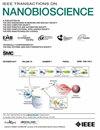Ontology-Based Data Collection for a Hybrid Outbreak Detection Method Using Social Media
IF 4.4
4区 生物学
Q1 BIOCHEMICAL RESEARCH METHODS
引用次数: 0
Abstract
Given the persistent global challenge presented by rapidly spreading diseases, as evidenced notably by the widespread impact of the COVID-19 pandemic on both human health and economies worldwide, the necessity of developing effective infectious disease prediction models has become of utmost importance. In this context, the utilization of online social media platforms as valuable tools in healthcare settings has gained prominence, offering direct avenues for disseminating critical health information to the public in a timely and accessible manner. Propelled by the ubiquitous accessibility of the internet through computers and mobile devices, these platforms promise to revolutionize traditional detection methods, providing more immediate and reliable epidemiological insights. Leveraging this paradigm shift, our proposed framework harnesses Twitter data associated with infectious disease symptoms, employing ontology to identify and curate relevant tweets. Central to our methodology is a hybrid model that integrates XGBoost and Bidirectional Long Short-Term Memory (BiLSTM) architectures. The integration of XGBoost addresses the challenge of handling small dataset sizes, inherent during outbreaks due to limited time series data. XGBoost serves as a cornerstone for minimizing the loss function and identifying optimal features from our multivariate time series data. Subsequently, the combined dataset, comprising original features and predicted values by XGBoost, is channeled into the BiLSTM for further processing. Through extensive experimentation with a dataset spanning multiple infectious disease outbreaks, our hybrid model demonstrates superior predictive performance compared to state-of-the-art and baseline models. By enhancing forecasting accuracy and outbreak tracking capabilities, our model offers promising prospects for assisting health authorities in mitigating fatalities and proactively preparing for potential outbreaks.利用社交媒体的混合疫情检测方法基于本体的数据收集。
鉴于快速传播的疾病所带来的持续性全球性挑战,特别是 COVID-19 大流行病对全球人类健康和经济造成的广泛影响,开发有效的传染病预测模型已变得极为重要。在此背景下,网络社交媒体平台作为医疗保健领域的重要工具,为及时、便捷地向公众传播重要的健康信息提供了直接途径。在通过电脑和移动设备无处不在地访问互联网的推动下,这些平台有望彻底改变传统的检测方法,提供更即时、更可靠的流行病学见解。利用这一模式转变,我们提出的框架利用与传染病症状相关的 Twitter 数据,采用本体论来识别和整理相关推文。我们方法的核心是一个混合模型,它集成了 XGBoost 和双向长短期记忆(BiLSTM)架构。XGBoost 的集成解决了处理小数据集的难题,这是在爆发期间因时间序列数据有限而固有的问题。XGBoost 是最小化损失函数和从多元时间序列数据中识别最佳特征的基石。随后,由原始特征和 XGBoost 预测值组成的组合数据集被导入 BiLSTM 进行进一步处理。通过对跨越多种传染病爆发的数据集进行广泛实验,我们的混合模型与最先进的模型和基线模型相比,显示出了卓越的预测性能。通过提高预测准确性和疫情跟踪能力,我们的模型有望协助卫生部门减少死亡人数,并为潜在的疫情爆发做好积极准备。
本文章由计算机程序翻译,如有差异,请以英文原文为准。
求助全文
约1分钟内获得全文
求助全文
来源期刊

IEEE Transactions on NanoBioscience
工程技术-纳米科技
CiteScore
7.00
自引率
5.10%
发文量
197
审稿时长
>12 weeks
期刊介绍:
The IEEE Transactions on NanoBioscience reports on original, innovative and interdisciplinary work on all aspects of molecular systems, cellular systems, and tissues (including molecular electronics). Topics covered in the journal focus on a broad spectrum of aspects, both on foundations and on applications. Specifically, methods and techniques, experimental aspects, design and implementation, instrumentation and laboratory equipment, clinical aspects, hardware and software data acquisition and analysis and computer based modelling are covered (based on traditional or high performance computing - parallel computers or computer networks).
 求助内容:
求助内容: 应助结果提醒方式:
应助结果提醒方式:


